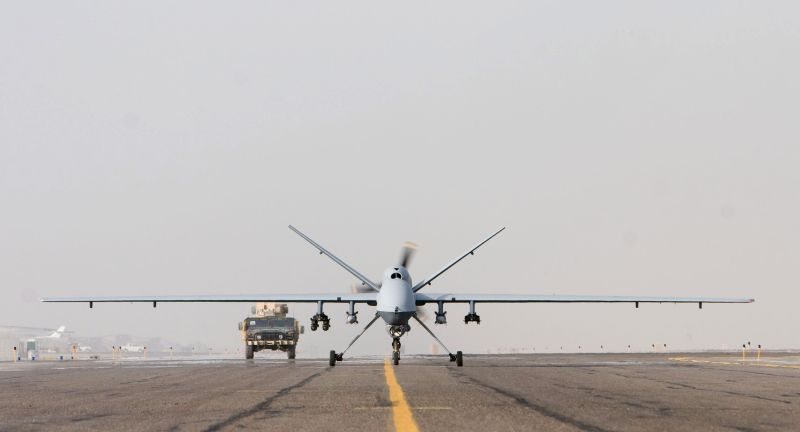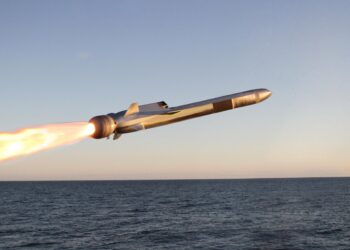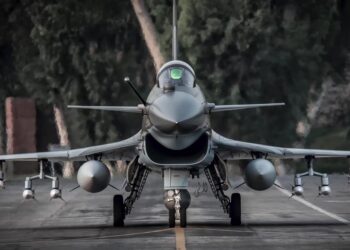We can all agree that Unmanned Aerial Systems (UASs) have proven themselves one of, if not the single most, useful capabilities the U.S. military has deployed in the last decade. From the hand-held Raven to the larger, rail-launched Scan Eagle up to the Predator (and its bigger and badder fraternal twin, the Reaper) and the high-altitude, long-endurance Global Hawk, UASs have transformed intelligence, surveillance and reconnaissance (ISR) at the tactical and operational levels of conflict.
Until their withdrawal last year from Iraq and to this day in Afghanistan, U.S. forces rarely left their bases without access to an overhead UAS video feed. Hellfire-armed Predators, operated by the CIA, have become the single most important tool for prosecuting the global campaign against violent extremists. All told, the Department of Defense has spent billions of dollars deploying thousands of UASs along with ground stations, controllers and supporting infrastructures.
The Pentagon intends to spend billions more on UASs in the near future. Some of this money will go to deploy advanced systems such as the Air Force’s Block 40 Global Hawk and its cousin, the Navy’s broad area maritime surveillance system (BAMS), as well as the Army’s Shadow and Grey Eagle UASs. Additional resources will be devoted to development of new platforms such as the Navy’s Integrator, a small tactical unmanned aircraft system (STUAS) and Unmanned Carrier-Launched Airborne Surveillance and Strike (UCLASS) system.
But the overwhelming bulk of the money being spent on UASs will go to buy additional Air Force Reapers. Since they were first introduced in 2002, the Air Force has purchased some 350-400 of these platforms. While procurement of the Predator ended in 2011, the Air Force has bought around 100 Reapers and plans to go on doing so as far as the eye can see.
According to DoD’s 2013-2042 Aircraft Procurement Plan, the number of platforms in the large UAS category which includes both the Global Hawks and Reapers will grow from approximately 445 in FY 2013 to approximately 645 in FY 2022. Since the total planned procurement of Global Hawks is around 50, most of these will be Reapers. For FY 2013, more than half the total number of aircraft the Air Force plans to buy will be Reapers.
The size of the Predator/Reaper fleet is driven by the requirement to establish 65 reliable orbits. What’s the basis of this requirement? It sprang fully formed from the head of former Secretary of Defense Robert Gates at the height of the Iraq conflict. There was no data to support that number. Nor am I aware of any data that demonstrates the value of increasing the number of orbits from the current level of around 50 to 65. With the U.S. already reducing its force levels in Afghanistan and planning a complete withdrawal by the end of 2014, the 65 orbit requirement makes no sense.
In fact, there are several additional reasons to question the utility of the 65 orbit goal. The Army is planning to acquire nearly 200 Grey Eagles, a Predator variant, to do much the same mission. It also conducted the first flight of its Long Endurance Multiple Intelligence Vehicle, a large airship that can stay airborne for days and maintain persistent surveillance of very large areas.
Also, advanced sensors, such as Gorgon Stare, will allow each Predator/Reaper to track multiple targets at the same time, reducing the overall demand for orbits. Finally, even as it was ramping up Predator orbits, DoD also was investing in a fleet of manned surveillance aircraft to provide additional ISR. The military is being crushed under the weight of ISR information that it has not the means to exploit today. What possible utility is there from the last 15 or so orbits?
It is time for DoD to revisit the 65 orbit goal and for the Air Force to call a halt to its frenzied acquisition of Reapers. The new Strategic Defense Guidance explicitly says that the military should no longer plan for large-scale, protracted stability operations, the kind of situations that would have called for filling the skies with Predator/Reaper orbits. Yes, the world is an uncertain place and we must be prepared to track terrorists, deal with humanitarian disasters and respond to crises anywhere in the world. But do these missions translate into a requirement for 65 Predator/Reaper orbits, particularly given all the other ISR investments DoD is supporting? The answer is no. It is entirely possible that half the current goal, 30 orbits, would be sufficient to cover all the other missions identified in the Strategic Defense Guidance.
The Air Force needs to halt the rush to 65 orbits, cut back its acquisition goals for the Reaper and take a deep breath. It is time to stop and consider what the Air Force wants in the next generation of UASs. All our strategy documents and intelligence assessments warn of a future in which our adversaries will acquire modern air defense systems. Neither the Predator nor the Reaper could survive in such an environment.
So, why is the Air Force locking itself into a UAS fleet that could not deal with the future threat?
The Air Force should put together a research and technology development plan that will lead to the next generation of UASs, ones that can survive in hostile air environments, operate safely in crowded air space and perform their mission even in the face of communications failures and electronic attack.










